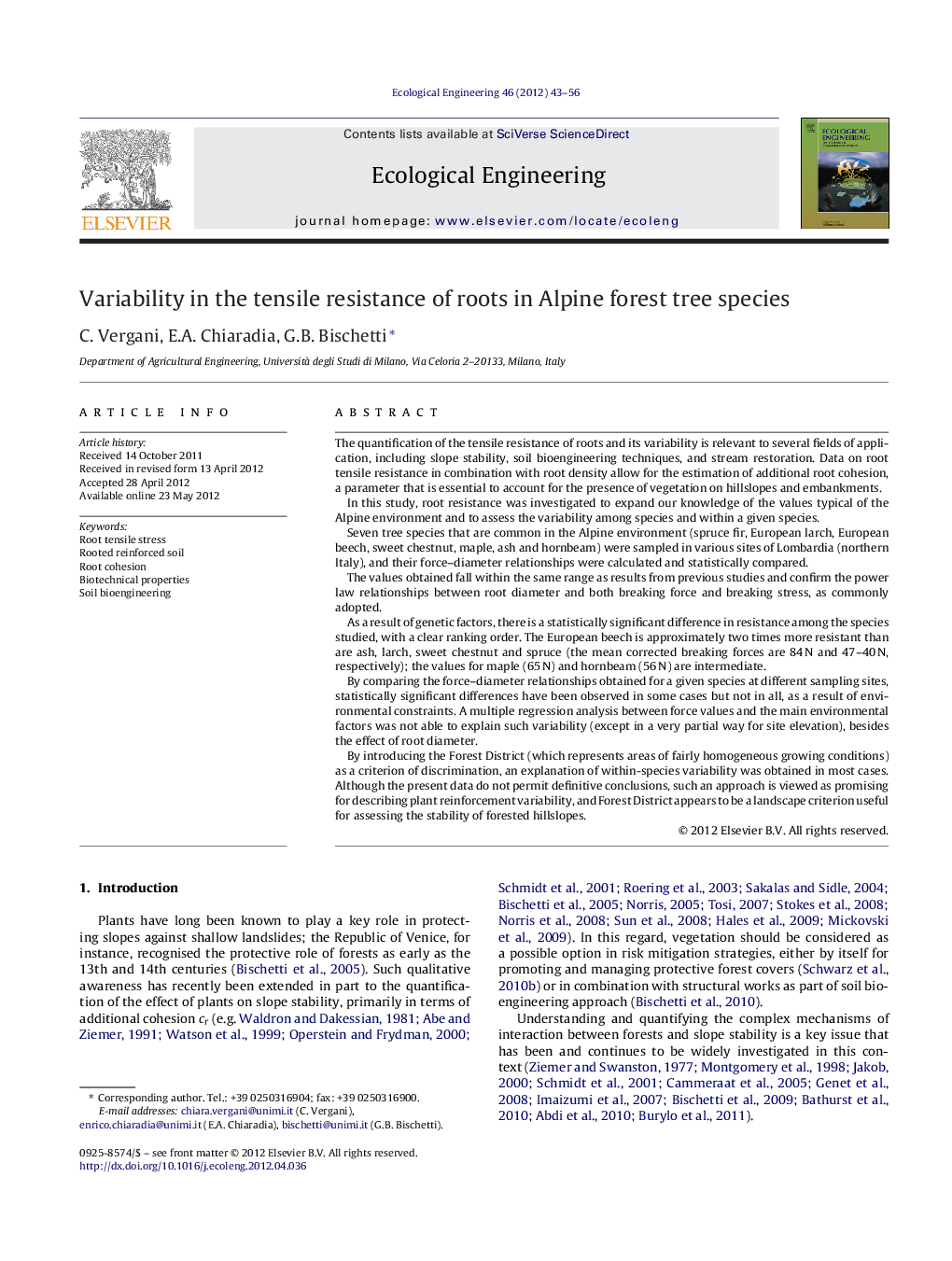| Article ID | Journal | Published Year | Pages | File Type |
|---|---|---|---|---|
| 4389978 | Ecological Engineering | 2012 | 14 Pages |
The quantification of the tensile resistance of roots and its variability is relevant to several fields of application, including slope stability, soil bioengineering techniques, and stream restoration. Data on root tensile resistance in combination with root density allow for the estimation of additional root cohesion, a parameter that is essential to account for the presence of vegetation on hillslopes and embankments.In this study, root resistance was investigated to expand our knowledge of the values typical of the Alpine environment and to assess the variability among species and within a given species.Seven tree species that are common in the Alpine environment (spruce fir, European larch, European beech, sweet chestnut, maple, ash and hornbeam) were sampled in various sites of Lombardia (northern Italy), and their force–diameter relationships were calculated and statistically compared.The values obtained fall within the same range as results from previous studies and confirm the power law relationships between root diameter and both breaking force and breaking stress, as commonly adopted.As a result of genetic factors, there is a statistically significant difference in resistance among the species studied, with a clear ranking order. The European beech is approximately two times more resistant than are ash, larch, sweet chestnut and spruce (the mean corrected breaking forces are 84 N and 47–40 N, respectively); the values for maple (65 N) and hornbeam (56 N) are intermediate.By comparing the force–diameter relationships obtained for a given species at different sampling sites, statistically significant differences have been observed in some cases but not in all, as a result of environmental constraints. A multiple regression analysis between force values and the main environmental factors was not able to explain such variability (except in a very partial way for site elevation), besides the effect of root diameter.By introducing the Forest District (which represents areas of fairly homogeneous growing conditions) as a criterion of discrimination, an explanation of within-species variability was obtained in most cases. Although the present data do not permit definitive conclusions, such an approach is viewed as promising for describing plant reinforcement variability, and Forest District appears to be a landscape criterion useful for assessing the stability of forested hillslopes.
► Roots’ resistance is a key point in understanding the role of plants in stabilizing. ► Root tensile force at rupture values are mainly related to roots diameter. ► Difference in root resistance among species is significant according to genetics. ► Significant difference exists within species in response to environmental factors. ► Within-species variability can be explained by means of Forest Districts.
